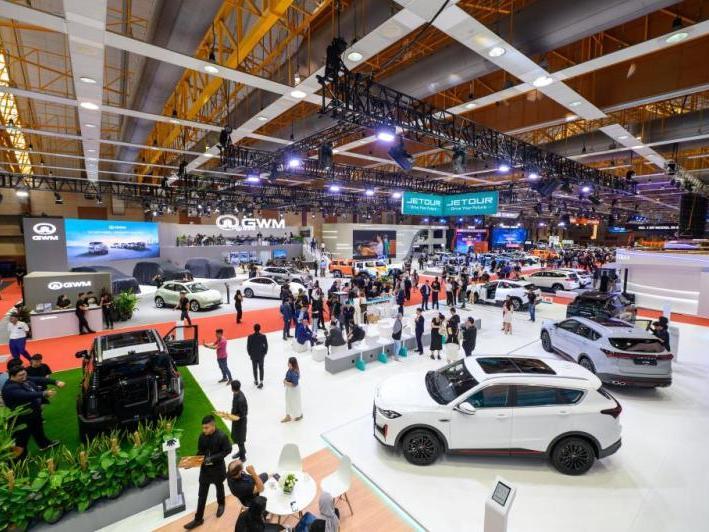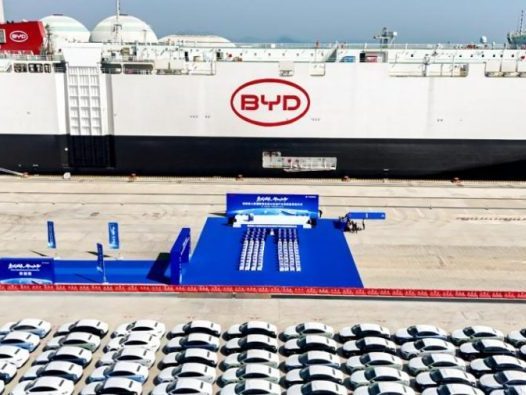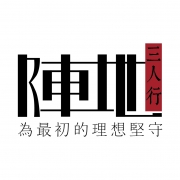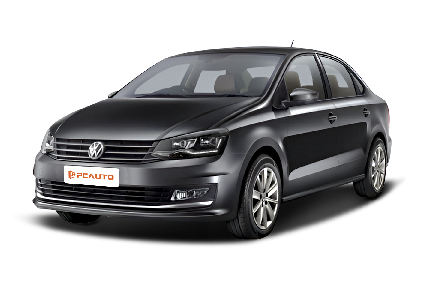Q
Is the 2018 Volkswagen Vento suitable for long - distance driving?
The 2018 Volkswagen Vento, as a compact sedan, is a solid choice for long drives in the Malaysian market. Its 1.6-liter naturally aspirated engine delivers smooth power, paired with a 6-speed automatic transmission that offers decent fuel economy – perfect for highway cruising. The suspension is tuned more for comfort, doing a good job of soaking up road bumps and keeping long-distance fatigue in check. Interior space is adequate for four adults, and the boot is roomy enough for luggage too.
A quick tip though: before setting off on a long journey, make sure to check the tire condition and cooling system, and keep up with regular servicing to keep it running at its best. For Malaysian buyers, the Vento benefits from a widespread service network and relatively easy access to parts, making ownership costs reasonable.
It's worth noting that while it comes with basic safety features like ABS and dual airbags, if you're after more advanced active safety tech, you might want to look at higher trim levels or competitors in the same segment. And as always, on those long hauls, plan regular rest stops – no need to push through fatigue.
Special Disclaimer: This content is published by users and does not represent the views or position of PCauto.
Related Q&A
Q
Is the Volkswagen Vento 2018 expensive to maintain?
The 2018 Volkswagen Vento falls into the upper-middle range when it comes to maintenance costs in Malaysia. The actual figures depend on how you drive and what services you need, but you're looking at roughly RM400 to RM600 for standard stuff like an oil change and filter replacements. For more major services – think transmission fluid swaps or brake system overhauls – you could be shelling out anywhere from RM800 to RM1200.
Compared to Japanese models like the Toyota Vios or Honda City, the Vento does cost a bit more in parts and labor. That's mainly down to Volkswagen being a German brand; some components have to be imported, which bumps up the price tag. But hey, you do get that solid German driving feel and some pretty decent safety kit for the class, which counts for something.
If you keep up with regular servicing at authorized VW centers and stick to the manufacturer's recommended maintenance schedule, you can definitely keep those long-term repair gremlins at bay. And let's not forget Malaysia's hot and humid climate – make sure you're checking the cooling system and AC filter regularly. It'll help keep the car running smoother for longer.
So yeah, the Vento isn't the cheapest to maintain, but with a bit of budget planning and choosing a reliable workshop, you can keep those costs manageable.
Q
What is the service cost of a Volkswagen Vento 2018?
For the 2018 Volkswagen Vento in Malaysia, routine maintenance costs typically range from RM300 to RM600. The exact figure depends on the specific services needed—think oil changes, filter replacements, that sort of thing—and how each authorized service center prices their work. Your best bet is to check Volkswagen Malaysia’s official website or swing by your local dealer to get the latest quotes.
It’s no secret that German cars usually cost a bit more to maintain than their Japanese counterparts, but that’s often down to the precision engineering and high-quality components they use.
Sticking to regular maintenance isn’t just about keeping your car running longer; it also helps preserve its resale value, especially for a model like the Vento that’s all about driving feel. If you’re looking to cut costs, Malaysian owners can opt for third-party certified workshops, but make sure they’re using original or equivalent-quality parts to avoid voiding any warranty coverage. And if you’re on a tight budget, focus on the essential basics first—but don’t skimp on replacing critical fluids like transmission oil or brake fluid when they’re due.
Q
How reliable is the Volkswagen Vento 2018?
The 2018 Volkswagen Vento has proven to be a generally reliable workhorse in the Malaysian market. Under the hood, you'll find a 1.6-liter naturally aspirated engine paired with a 6-speed automatic gearbox – a powertrain combo that's been market-tested over the years. Maintenance costs are pretty reasonable, and parts availability isn't an issue, making it a solid pick for daily commuting duties.
Owner feedback highlights its frugal fuel economy, typically returning around 12-14km/L in the city, and a relatively trouble-free electronics package. However, it's wise to keep an eye on chassis components like suspension bushings; the tropical climate here can speed up rubber part degradation, so regular checks are a good idea.
A quick note for fellow German car owners in Malaysia: stick to the maintenance schedule religiously. VW recommends servicing every 10,000km or 6 months, whichever comes first, and using oil that meets the VW 50200 specification – this will help keep that engine running strong for the long haul.
If you're scouting the used market, pay extra attention to the air conditioning system's cooling performance (a must in our heat!) and, if it's a TSI variant with DSG, test the gearbox for smooth shifts. These are biggies for tropical driving.
All in all, with proper and timely maintenance, the 2018 Vento handles family runabouts capably. Resale value sits somewhere in the middle of the pack for its class – not a standout, but not a disappointment either.
Q
Does the 2018 Vento have LED tail lights?
So, the 2018 Volkswagen Vento in Malaysia did come with LED taillights on some of the higher-spec trims. Those LEDs definitely step up the game when it comes to visibility and safety after dark. But hey, don't expect them on the base models – those probably still stick with good old halogen bulbs. So, if you're checking one out, you'll want to confirm the exact specs based on the specific variant.
LEDs are pretty much the standard these days for a reason, right? They last longer, sip less juice, and light up quicker than halogens. For Malaysian buyers, whether you're hunting for a used Vento or a brand-new one, I'd strongly suggest either checking the car in person or having a chat with the dealer to nail down the lighting setup. While you're at it, might as well ask about other handy features like auto headlights or dynamic turn signals – they could be available too.
And let's not forget, the rise of LED tech has given car lighting systems a general upgrade across the board. Think daytime running lights, fog lights – all those little details that not only add a bit more techy flair to the car but also make driving safer.
Q
What colors was the Volkswagen Vento available in for 2018?
The 2018 Volkswagen Vento hit the Malaysian market with a solid lineup of classic, practical color options. Think Pure White, Deep Black, Reflex Silver, and Tornado Red – shades that not only align with local tastes but also hold up well to daily use, hiding dirt and weathering like pros. As a compact sedan focused on value, the Vento’s color palette strikes a nice balance between steady and modern, making it a solid pick for families and younger drivers alike.
When picking a color here, Malaysia’s climate plays a big role. Lighter hues like white and silver are smart choices – they reflect sunlight better, keeping that cabin from turning into an oven. Darker colors, though? They bring a sleek, premium vibe and are super easy to pair with aftermarket mods if that’s your thing.
Volkswagen didn’t skimp on paint quality either. They used high-grade coating tech, so the colors stay vibrant longer and stand up to whatever the tropical climate throws at them – corrosion included. Knowing your options and what each brings to the table can help you make a smarter call, whether you’re going with personal preference or practical needs. Plus, it’ll help you keep your Vento looking sharp for years to come.
Q
What is the fuel economy of the Volkswagen Vento 2018?
The 2018 Volkswagen Vento delivers solid fuel efficiency in the Malaysian market. Its 1.6-liter MPI naturally aspirated engine paired with a 6-speed automatic transmission returns an official combined fuel consumption figure of around 6.2 liters per 100 kilometers – that's roughly 16 kilometers per liter. This holds up pretty well for real-world use, blending city commutes with highway stretches.
Volkswagen's refined engine tuning, including multi-point fuel injection, plus the car's lightweight construction, are key to its efficient performance. It aligns nicely with Malaysian drivers' focus on everyday running costs. Now, it's worth keeping in mind that actual fuel economy can vary based on driving style, road conditions, and how well the car's maintained. Sticking to regular servicing and adopting a smooth driving approach will help you get the most out of every drop.
In its class, the Vento's fuel efficiency sits right in the mix with its Japanese rivals, showcasing German engineering's ability to balance power and frugality. For Malaysian buyers watching their budget and keeping an eye on ownership costs, this makes the Vento a compelling option to consider.
Q
What are the engine specifications of the Volkswagen Vento 2018?
The 2018 Volkswagen Vento in Malaysia comes packing a 1.6-liter MPI naturally aspirated four-cylinder petrol engine. It cranks out approximately 110 horsepower (82 kW) at 5,800 rpm and hits peak torque of 153 Nm at 3,800 rpm, all mated to a 6-speed automatic gearbox. This powertrain is all about smoothness and fuel efficiency, making it a solid fit for city driving.
Under the hood, the Vento uses multi-point injection rather than the more advanced direct injection setup. But here's the upside: it's cheaper to maintain and plays nicer with whatever fuel quality you throw at it – perfect for Malaysia's roads and fuel conditions, let's be real.
Now, naturally aspirated engines like this one deliver power in a nice, linear way, which is smooth. But yeah, compared to a turbo, you do feel a bit less punch down low in the revs. The trade-off? Simpler, more reliable mechanicals that should stand the test of time better over the long haul.
Volkswagen did a solid job tuning this engine too. It handles Malaysia's hot and sticky tropical weather without breaking a sweat in the cooling department, and back then, it met Euro 4 emissions standards – showing VW knows its way around engine calibration.
For shoppers on a budget who still want that German driving feel, the Vento strikes a good balance. It's got you covered for daily commuting, and you still get that reassuringly planted German chassis that makes the drive feel more refined than your average runabout.
Q
What is the resale value of a Volkswagen Vento?
In Malaysia, the used car residual value of the Volkswagen Vento is significantly influenced by factors such as age, mileage, condition, and market demand. Typically, a 3-year-old Vento retains around 50%-60% of its original value, while a 5-year-old model might drop to approximately 40%. The specific figure really hinges on factors like regular service records and whether it's still within the original factory warranty period. As an entry-level German sedan, the Vento's 1.6L MPI engine paired with a 6-speed automatic gearbox has built up a decent reputation for durability in the local market. Coupled with Volkswagen's brand recognition, its residual value tends to outperform some competitors in the same segment. It's worth noting that the Malaysian used car market is quite sensitive to the maintenance costs of German cars' electronic systems, so sellers are advised to provide complete service records to potentially boost the selling price. If you're considering holding onto it for the long term, opting for a VW Approved Used Car (Volkswagen's certified pre-owned program) can get you additional warranty coverage, which positively impacts the resale value down the line. Other factors affecting residual value include body color – silver or white are more preferred locally – trim level (the Highline trim generally holds value better), and accident history. Before selling, it's a good idea to check instant valuation references on Malaysian used car platforms like Carsome or MyTukar.
Q
Is 2018 Vento 3 cylinder or 4 cylinder?
The 2018 Vento comes with a 1.6-liter MPI four-cylinder naturally aspirated engine – a familiar workhorse in the Malaysian market, loved by many owners for its rock-solid reliability and fuel-sipping nature. Four-cylinder engines typically run smoother and vibrate less than their three-cylinder counterparts, especially shining during highway cruises, which makes them a great fit for Malaysia's long-distance driving needs. As an affordable family sedan, the Vento's powertrain strikes a nice balance between daily commuting practicality and family use, with the 1.6-liter displacement packing enough punch to handle the country's hilly terrain. It's worth remembering, though, that cylinder count is just one piece of the puzzle – buyers should also weigh factors like transmission pairing, chassis tuning, and after-sales service for the full picture. Malaysia's hot and rainy climate does put some demands on engine cooling systems and durability, so regular maintenance is key to keeping that four-cylinder engine performing at its best.
Q
Is Vento 2018 high maintenance?
The 2018 Volkswagen Vento falls into the mid-range when it comes to maintenance costs in the Malaysian market. How much you'll spend on upkeep really depends on the car's age, mileage, and how you drive it day-to-day. Routine services like oil changes and filter replacements are pretty much on par with other cars in its class. Parts availability is generally good locally, though some electronic components or special accessories might need to be ordered in advance. Sticking to the manufacturer's recommended service schedule is definitely smart to keep long-term repair risks low.
If you're looking to trim costs a bit, reputable third-party workshops are worth considering—but make sure they use parts that meet the proper specs. Also, keeping an eye on your suspension and gearbox condition with regular checks can help catch potential issues before they get worse. Malaysia's hot and rainy weather takes a toll on rubber components and cooling systems, so it's a good idea to shorten the inspection intervals for those parts. If you're buying a used Vento, shelling out for a professional inspection to check the engine condition and rust proofing is money well spent—it'll save you from nasty surprise bills down the line.
Overall, as long as you keep up with regular maintenance and go through proper service channels, the 2018 Vento shouldn't hit you with sky-high maintenance costs. Its durability is right there with other mainstream compact sedans.
Latest Q&A
Q
How big is the gas tank on a GR Corolla 2025?
The 2025 Toyota GR Corolla comes with a 50 - liter fuel tank. This high - performance hatchback is equipped with a 1.6 - liter three - cylinder turbocharged engine and paired with a full - time all - wheel drive system. While offering an excellent driving experience, the 50 - liter fuel tank capacity can also meet the needs of daily commuting and weekend getaways. For Malaysian consumers, the fuel tank design of the GR Corolla strikes a great balance between performance and practicality. Considering the common local driving conditions and the distribution of gas stations, this capacity can support a cruising range of approximately 400 - 500 kilometers (it specifically depends on driving habits and road conditions).
It's worth mentioning that as a model focused on the driving experience, the fuel tank position of the GR Corolla is specially designed to optimize the vehicle's weight distribution, which is also a common practice of Toyota's Gazoo Racing department when developing high - performance models. The hot and rainy climate in Malaysia places higher requirements on the fuel tank material. The GR Corolla uses anti - corrosion coatings and enhanced sealing designs to ensure safe and reliable operation in various environments. If you often drive long distances, it is recommended to regularly check the fuel tank and the oil circuit system, which is especially important in high - temperature and high - humidity environments.
Q
What kind of oil does a 2025 GR Corolla take?
As a high-performance vehicle, the 2025 GR Corolla is recommended to use fully synthetic oil that meets Toyota's original factory standards. The viscosity is typically 0W - 20 or 5W - 30. Specifically, refer to the owner's manual or the advice of local Toyota dealers in Malaysia, as the tropical climate may affect the oil selection. High-performance turbocharged engines have relatively high requirements for oil. Fully synthetic oil can provide better high-temperature protection and anti-wear performance. It is recommended to change the oil every 5,000 to 8,000 kilometers or every 6 months (whichever comes first). Owners in Malaysia need to pay attention to choosing oil with API SP or ILSAC GF - 6A certification. This type of oil is designed for modern engines and can effectively prevent low-speed pre-ignition problems. If you frequently drive aggressively or participate in track days, you can consider using higher-performance racing oil, but for daily use, the specifications recommended by the factory are sufficient. Regular oil changes are crucial for maintaining the performance of the GR Corolla's G16E - GTS 1.6T three-cylinder engine. Meanwhile, it is recommended to use the original factory oil filter to ensure the filtering effect.
Q
What is the difference between a 2025 and 2024 Corolla?
The main differences between the 2025 and 2024 Corolla models are concentrated on the optimization of technological features and the powertrain. The 2025 Corolla is expected to upgrade the Toyota Safety Sense intelligent driving safety system to version 3.0, adding more precise pre - collision warnings and full - speed range radar cruise control. It may also come with a larger center - console touchscreen and support wireless Apple CarPlay/Android Auto, while the 2024 model uses the 2.5 - version system and requires a wired connection.
In terms of power, the 2025 model might slightly improve the overall output efficiency of the 1.8L hybrid system, but it will keep the same 1.8L naturally - aspirated and 1.6L turbo options as the 2024 model. There are minor differences in appearance. The 2025 model may adjust the front grille design and wheel styles.
Malaysian customers should note that the locally - introduced versions may have their configurations adjusted according to market strategies. For example, Southeast Asian specifications often enhance the air - conditioning system and anti - rust treatment for the tropical climate.
As a globally best - selling model, the Corolla's annual iterations are usually based on steady improvements. If you have a limited budget and don't need the latest technology, the 2024 model still offers high cost - effectiveness. Consumers who pursue cutting - edge features can wait for the 2025 model to hit the market and then compare the actual differences between the two models.
Q
Why is the GR Corolla 2025 so special?
The 2025 GR Corolla is special because it inherits Toyota's high - performance genes from Gazoo Racing. It's equipped with a 1.6T three - cylinder turbocharged engine that can churn out over 300 horsepower. And it comes with the GR - Four all - wheel - drive system, which provides flexible power distribution, offering an exhilarating driving experience. It's especially suitable for Malaysia's winding mountain roads and race tracks.
This car also features a lightweight body and a sport - tuned suspension, ensuring precise handling. The limited - edition Morizo Edition further enhances its exclusivity. For Malaysian car enthusiasts, the GR Corolla is not just a high - performance hot hatch; it represents Toyota's commitment to pure driving pleasure. Its arrival allows those with limited budgets to experience the thrill similar to that of a rally car.
Moreover, it has great potential for modification. Given the strong local car - modifying culture, there's plenty of room for future upgrades. Whether it's for daily commuting or track days, the GR Corolla can handle it all. It's an ideal choice that combines practicality and performance.
Q
What is the top speed of the 2025 Toyota Corolla GR?
In 2025, the top speed of the Toyota Corolla GR is expected to reach approximately 225 to 235 kilometers per hour. The specific figures may vary due to different market tuning or configurations. This performance - oriented model is equipped with a 1.6 - liter three - cylinder turbocharged engine with a maximum power of about 300 horsepower. It also comes with the GR - Four all - wheel drive system and a 6 - speed manual or 8 - speed automatic transmission, offering drivers a precise handling experience.
For car enthusiasts in Malaysia, the Corolla GR not only inherits the practicality of the regular Corolla but also shows excellent dynamic performance on local winding roads or high - speed sections through its strengthened chassis, sporty suspension, and exclusive aerodynamic kits.
It's worth noting that high - performance hatchbacks need attention on heat dissipation and tire selection in hot climates. Regular maintenance is recommended to ensure the engine and cooling system are in optimal condition. Meanwhile, Malaysian owners can refer to the adaptation tuning suggestions provided by UMW Toyota. Usually, these models require higher - grade fuel to unleash their full potential.
View MoreRelated News

Because of lack of funds to upgrade the factory, Volkswagen postponed the release of ID.Golf and ID.Roc
JamesSep 17, 2025

Volkswagen Locks Vehicle Horsepower, Unlocks Full Power via Subscription
JohnAug 19, 2025

Summarizing the 2025 Malaysia Auto Show, a large number of new cars were launched in Malaysia this year.
MichaelMay 12, 2025

Volkswagen ID.Buzz's Bizarre Recall: Third-Row Seats Too Wide, Need to Be Modified
Kevin WongMay 8, 2025

BYD Sets Global Sales Target of 5.5 Million Units for 2025
RobertMar 26, 2025
View More


















Pros
Cons